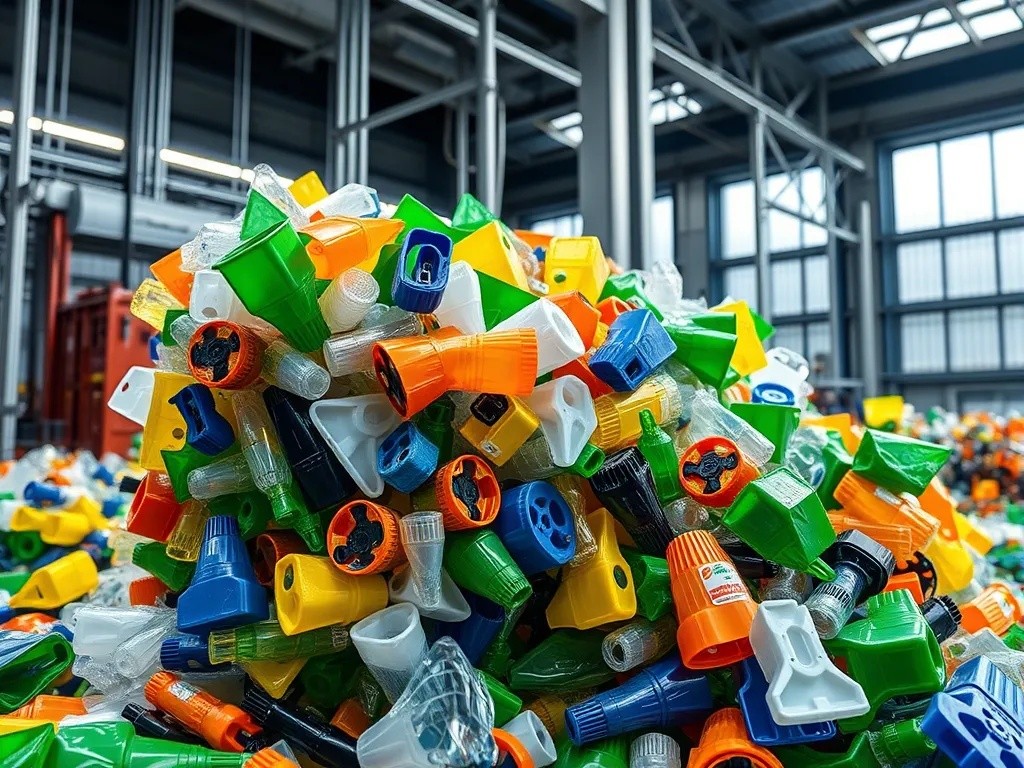In recent years, there has been a significant advancement in the field of Artificial Intelligence (AI) and Augmented Reality (AR). These technologies have become increasingly popular and have the potential to enhance virtual experiences in various fields such as gaming, education, healthcare, and...
Computer Program Turns Plastic Waste into Building Materials

The global plastic waste crisis has reached alarming proportions, with millions of tons of plastic polluting our oceans, landfills, and natural environments every year. However, innovative technology is offering a promising solution through computer programs that can transform discarded plastic into valuable building materials, creating a sustainable circular economy approach to both waste management and construction.
The Technology Behind Plastic-to-Building Material Conversion
Advanced computer programs are now capable of analyzing different types of plastic waste and determining optimal processing methods to convert them into construction-grade materials. These sophisticated algorithms consider factors such as plastic composition, contamination levels, and structural requirements to create durable building components.
Key Processing Steps
- Automated sorting and identification of plastic types using machine learning
- Cleaning and preparation protocols optimized by computer algorithms
- Melting and reforming processes controlled by precision software
- Quality control testing managed through digital monitoring systems
- Custom molding and shaping based on specific construction requirements
Types of Building Materials Created
Computer-controlled processing systems can transform various plastic waste streams into multiple construction materials, each engineered for specific applications in the building industry.
Structural Components
Recycled plastic can be processed into load-bearing beams, columns, and panels that meet or exceed traditional building material standards. These components offer excellent durability, weather resistance, and reduced maintenance requirements compared to conventional materials.
Insulation Materials
Plastic waste can be transformed into highly effective insulation products that provide superior thermal performance. Computer programs optimize the cellular structure of recycled plastic foam to maximize insulation properties while minimizing material usage.
Roofing and Exterior Materials
- Weather-resistant roofing tiles and shingles
- Durable siding and cladding systems
- Waterproof membrane materials
- Decorative architectural elements

Environmental and Economic Benefits
The implementation of computer programs for converting plastic waste into building materials offers significant advantages for both environmental sustainability and economic development.
Environmental Impact
This technology directly addresses the plastic pollution crisis by diverting waste from landfills and oceans. Each ton of recycled plastic building material represents a substantial reduction in environmental contamination and contributes to cleaner ecosystems. Additionally, these processes typically require less energy than producing virgin building materials, resulting in lower carbon emissions.
Economic Advantages
The conversion of waste plastic into building materials creates new revenue streams while reducing disposal costs. Construction companies benefit from cost-effective materials, while waste management operations can monetize previously worthless plastic streams. This technology also generates employment opportunities in recycling facilities and sustainable construction sectors.
Challenges and Future Developments
Despite the promising potential, several challenges remain in scaling this technology. Quality consistency, building code compliance, and public acceptance are ongoing concerns that require continued technological refinement and regulatory adaptation.
Technological Improvements
Future developments focus on enhancing computer algorithms to handle more diverse plastic waste streams and improving the mechanical properties of recycled building materials. Machine learning capabilities continue to evolve, enabling more efficient processing and higher-quality end products.
Global Implementation and Case Studies
Several countries and organizations have successfully implemented plastic-to-building material programs. These initiatives demonstrate the practical viability of the technology and provide valuable data for expanding implementation worldwide.
Construction projects using recycled plastic materials have shown promising results, with buildings demonstrating excellent performance, durability, and occupant satisfaction. These success stories are driving increased adoption and investment in plastic waste conversion technologies.
Conclusion
Computer programs that transform plastic waste into building materials represent a revolutionary approach to addressing two critical global challenges: plastic pollution and sustainable construction. As technology continues to advance and costs decrease, this innovative solution promises to play an increasingly important role in creating a more sustainable and circular economy. The future of construction may well depend on our ability to turn today's waste into tomorrow's building blocks.



